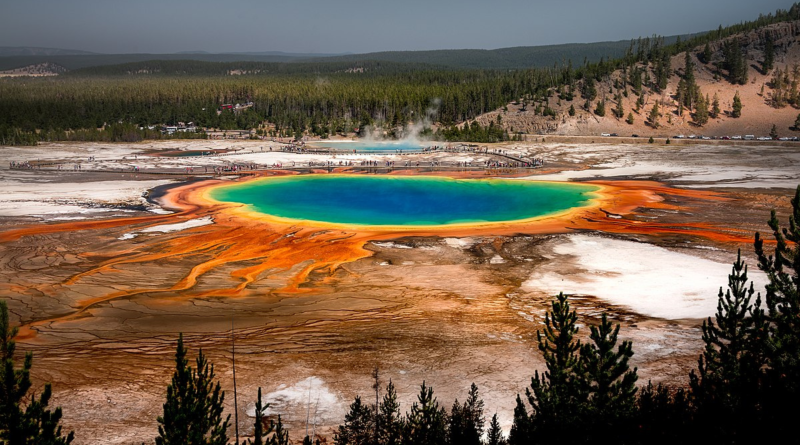Can You Swim In The Grand Prismatic Spring? A 3,000-Year-Old Natural Wonder
Find Out Can You Swim In The Grand Prismatic Spring: The Grand Prismatic Spring in Yellowstone National Park is a stunning natural wonder, known for its bright colors and enormous size, but hiding beneath its beauty are dangers to visitors. This article will delve into why the Grand Prismatic Spring is dangerous if you go too close.
Grand Prismatic Spring Introduction
It is an interesting fact that the Grand Prismatic Spring is the largest hot spring in the United States and the third in the world, measuring 370 feet wide and 160 feet deep. The amazing colors of this hot spring range from deep blue at the center to orange, yellow, and green towards the edge; all these colors were brought about by thermophilic bacteria that live in this hot water. However, as much as people love visiting it, it also poses some dangers.
Grand Prismatic Spring Extreme Heat
The water inside the Grand Prismatic Spring is very hot, with temperatures reaching up to 160°F (70°C). If someone falls into it, the heat can cause severe burns within seconds. When boiling water gets deep down your skin, it causes extensive damage and may even kill you if not treated well on time. Just imagine how scalding steam coming from one could hurt your exposed skin or even your eyes.
Unstable Boardwalks
In order to protect against any harm that may result from treading on the fragile ecosystem surrounding Grand Prismatic Spring, national park services have implemented a boardwalk system. In wet conditions, especially slippery boardwalks, they may be dangerous since they may become unstable. If someone slipped off a boardwalk, he or she would most likely land in extremely hot water beneath them.
Also read Alien Atmospheres Decoded: Can We Breathe There? Scientists Discover Shocking Details!
Grand Prismatic Spring Toxic Gases
Grand Prismatic Springs are nestled among other thermal features such as fumaroles and mud pots that release toxic gases like carbon dioxide and hydrogen sulfide gas. Inhalation of these gases can cause respiratory distress, while others lead to dizziness until you pass out completely unconscious. In extreme cases, when exposed for long periods of time, they can be lethal.
Fragile Ecosystem
Thermophilic bacteria and other microorganisms thrive in Grand Prismatic Spring’s hot water, making it a unique and delicate ecosystem. If visitors stray from the boardwalks, they can step on the fragile microbial mats or disturb the water, thereby damaging the ecosystem. Such actions will destroy the vibrant colors of the spring, as well as disrupt natural processes that maintain the ecosystem.
Unpredictable Nature
Yellowstone National Park is formed in an active volcanic area, and Grand Prismatic Spring is part of its dynamic landscape. Seismic activities, changes in water flow, or any other natural process may result in a fluctuation in the size and shape of the spring, or even cause it to cease existing at all. This means that whenever people are near this spring, they need to be very alert, since you never know when it will suddenly blow up.
Grand Prismatic Spring Conclusion
Being a dangerous place also famous for attracting and amazing people, The Grand Prismatic Spring is not only a stunning natural wonder that requires caution and respect from visitors. People should remain on marked-out trails, avoid contacting either the waters or surrounding facilities, and understand the dangers associated with extreme heat, toxic gases, and shaky ground. Visitors can reduce risks to themselves and their surroundings by following safety rules and using logic while enjoying beautiful places like the Grand Prismatic Springs.
Article inspired by yellowstonepark.com
